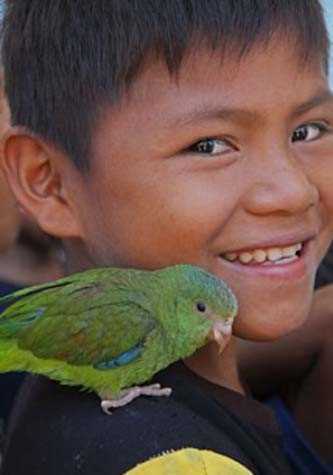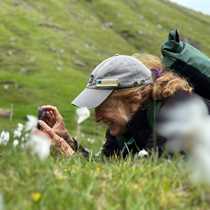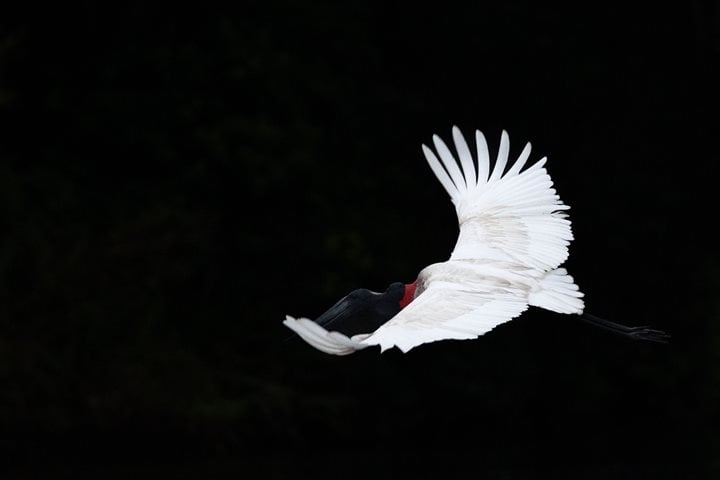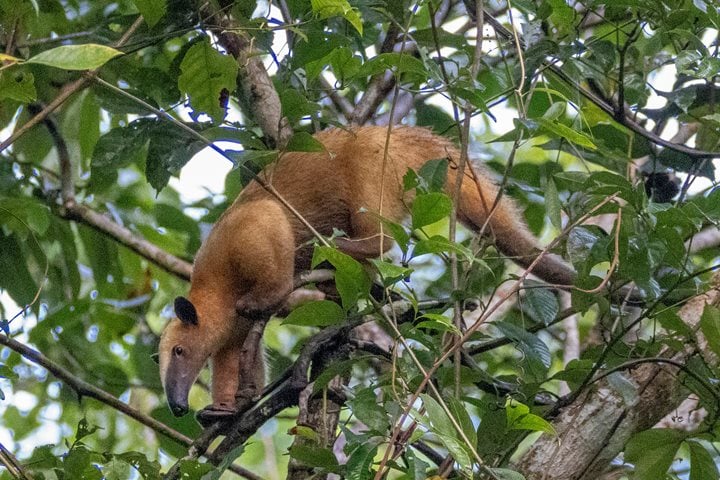With clear skies and enough of a bite in the early morning air to make our naturalist Renni wear a jacket, we took off in our skiffs to Aroboles Muertos, the place of the dead trees. The reflections were magnificent; this is an area of black water, where the tannins from the trees and detritus of the forest are steeped by local rains and leach out a black Earl Gray. The birds of the morning shared the chill experienced by Renni and they were puffed up a bit as they sat perched and preening in readiness for the day.
How many ways can you call a bird gray? We explored several of them as we sighted blue-gray tanager, Plumbeous Hawk, and Slate-colored Hawk. Then there is the Lone Ranger syndrome as displayed by the Masked-crimson tanager and the Masked Tityra we found. A pair of Bat Falcons sat atop a dead snag not only preening, but doing what seemed to be an avian version of Pilates as they alternately stretched legs and wings while balancing one-footed on their perch.
The small village of Flor de Castaña was our visit site for the balance of the morning. Guests aboard have brought a number of items, including school supplies, sports equipment, and t-shirts and we drop these donated items off to the local village schools where teachers distribute to the appropriate aged children and classrooms. The soccer balls are usually a big hit and this week the T-shirt with a soccer ball design made one youngster grin ear to ear.
This afternoon Denis spoke about the different fruits of the forest and we munched our way through the samples until it was time for our late day outing. Supay was our destination, just off the Río Ucayali. Both skiff rides and kayaking were offered. We started our kayak exploration by winding through a shortcut in the flooded forest. This opened into an enchanting area with small palm trees and giant lily pads. These gargantuan platters have been measured up to 8 ½ feet in diameter, albeit these were a more modest size of 3 to 4 feet across. The anti-herbivorous thorns were clearly visible on the newly unfolding pads, as well as on the lip edges of the more mature pads.
As the sun set we floated in our kayaks and skiffs, the calls of Horned Screamers, a large bird related to geese, echoed through the forest. The exclamation points of the evening were two fold; the trees at the mouth of the river erupting in roosting egrets as we drifted by. And after dinner, a wonderful musical serenade by three guitars, two alternating flutes, exuberant percussion and jubilant voices singing songs of the Andes.







